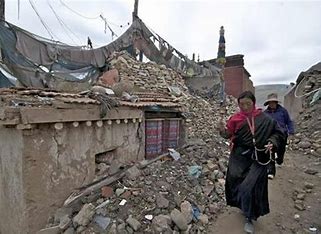The recent earthquake in Tibet has left a devastating mark on the region, with the death toll rising to 126 and over 30,000 people evacuated. This tragedy has not only highlighted the vulnerability of the region to natural disasters but also exposed significant gaps in the emergency response mechanisms. The earthquake, which struck with a magnitude of 7.1, was particularly destructive due to its shallow depth of about 10 km. Shallow earthquakes often cause more damage because the seismic waves have less distance to travel before reaching the surface, resulting in more intense shaking. The epicentre was in a remote part of Tibet, near Mount Everest, an area known for its challenging terrain and harsh weather conditions. Many of the affected areas are sparsely populated and difficult to access, which significantly hampered rescue efforts. The region’s infrastructure, including roads and communication networks, was severely damaged, making it even more challenging for rescue teams to reach those in need. Additionally, the cold winter temperatures, dropping as low as minus 18 degrees Celsius, further complicated the rescue operations. The slow response to the disaster can be attributed to several factors. Firstly, the remoteness of the affected areas meant that it took time for rescue teams to mobilize and reach the sites. The initial hours after an earthquake are crucial for saving lives, and any delay can result in a higher death toll. In this case, the combination of damaged infrastructure and harsh weather conditions created significant obstacles for the rescue missions. Secondly, the scale of the disaster overwhelmed the local resources. With over 3,000 buildings damaged and thousands of people in need of immediate assistance, the local authorities struggled to cope with the magnitude of the crisis. While international aid and support
In conclusion, the tragedy in Tibet underscores the need for improved disaster preparedness and response. While natural disasters cannot be prevented, their impact can be mitigated through proactive measures and timely interventions. It is a call to action for governments, international organizations, and communities to work together to build a safer and more resilient future.

